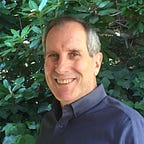Trouble in Paradise: From Maui to Philly, Climate Disasters Are Becoming an Increasingly Normal Topic of Conversation
Over the course of my international development career, one thing that always amazed me about America was how blessed we were by nature. Abundant natural resources. Farms that could feed the world. Massive oceans and two friendly neighbors bordering us.
Yes, we certainly had our share of natural catastrophes. But, fairly or not, our relative ability to cope with them contrasted with that of so many countries constantly cursed by droughts, floods, typhoons, oppressive heat or petrifying cold that regularly left their peoples homeless or lifeless. Though our disaster responses were occasionally disasters — recall Hurricane Katrina and New Orleans — we at least knew what we should prepare for and had the capacity to respond.
Lately, we’re not looking quite so lucky or so able to adapt.
Disaster Guessing Game
If, just a year ago, someone had asked you which state would have the most deadly American fire in over a century, would you have guessed Hawaii (which now has 89 deaths, and counting)?
If they’d challenged you to name a state that would be inundated by unprecedented flood-inducing downpours, would you have picked one that experts had picked to be the among safest in terms of climate change (Vermont)?
If they’d told you to guess which city would have the worst air quality in the world on June 7, 2023, would you have selected an American one (New York, due to the massive Candadian wildfires)?
An Increasingly Common Kind of Chat
And if, just a year ago, they’d told you that in years to come an increasingly frequent focus of conversations with friends would feature climate change-driven disasters they’d dodged or experienced, would you have been surprised?
I wouldn’t have been. But I might not have predicted it happening as soon as 2023.
Over the past few months, I’ve:
- flown into Philadelphia to visit my brother, only to be immersed in a hazardous haze (stemming from Canada’s massive fires) that had my wife and me exclaiming, “This is like California!”;
- contacted a friend living in New York’s inundated Hudson River Valley, and learned that he’d narrowly escaped torrents that could have carried away himself and his car;
- heard from friends in Vermont whose experience with similar inundation was not quite as extreme, only because they reside uphill from their flooded town;
- chatted with a friend who’d driven from smoke-choked Cleveland to Nova Scotia, witnessing the aftermath of devastation by fire (which I’d already known about) and flooding (which I hadn’t) along the way; and
- been relieved to learn that the son of good friends was away from his Maui home when the conflagrations there hit.
I also know folks who’ve repeatedly been evacuated (and lost a home) due to fire here in California; an in-law who came so close to dying in the country’s previously deadliest fire in the California town of Paradise (yes, that’s the name) that she was trying to figure out how to best use her body to shield her grandkids from perishing; and friends forced to move inland from their flood-soaked home near the Connecticut shore in the wake of Superstorm Sandy.
My point, of course, is not what I’ve experienced by virtue of being aware of all this. It’s not even been the real or potential dangers that friends and family have faced.
Rather, it’s that, for many of us, asking others about climate-linked havoc in their necks of the woods is beginning to become normalized, as common as asking them about the weather in a much more benign vein.
That’s clearly because such havoc is becoming more common, including here in insulated America. As bad as the recent incidents sketched here have been, they’re the tip of the iceberg for the country. The frequency of billion-dollar natural disasters in the United States has soared over the past three-plus decades. We averaged 3.1 such events per year (inflation-adjusted to 2022 dollars) in 1980–89. In 2020–22, our average was 20 per year.
Seeds of Hope, of Sorts
Now, as with many weather-related disasters, the catastrophe in Hawaii does not only stem from climate change which, in this instance, arguably contributed to hotter and drier fire-fueling air. Many addtional factors helped bring about Maui’s calamity, including the spread on the island of highly flammable non-native grasses imported for decorative and cattle-feeding purposes.
However, as bad as that sounds, addressing those non-climate factors provides seeds of hope for doing what we can to mitigate our climate-driven fate. Aiming for greater resilience though more fire-resistant vegetation, construction and habitation patterns, as well as fire fuel reduction and other policies, can at least slow the build-up of increasing hazards.
Yes, there remain the floods, the smoke, the droughts and the other mayhem sparked by climate change. That’s the big picture and the huge challenge.
What I’m suggesting here — a focus on protecting ourselves from the ravages of climate change — is no substitute at all for tackling all that. But nor is it mutually exclusive with doing so.
Which brings me back to another observation from international development: You do what you can, where you can, even if what you do right now does not save our would-be paradise of a planet from the trouble we’re inflicting on it.
In the meantime, my wife and I will drive up to Oregon from California this week to visit friends and family. Temperatures will approach 110 degrees as we pass through parched forests along the way. It still seems early enough in this year’s West Coast Fire Season — a term barely in use barely a decade ago — that there are no burning threats on the horizon. Though we may still have those threats in the backs of our minds…
Originally published at https://apromisedland.org on August 13, 2023.
